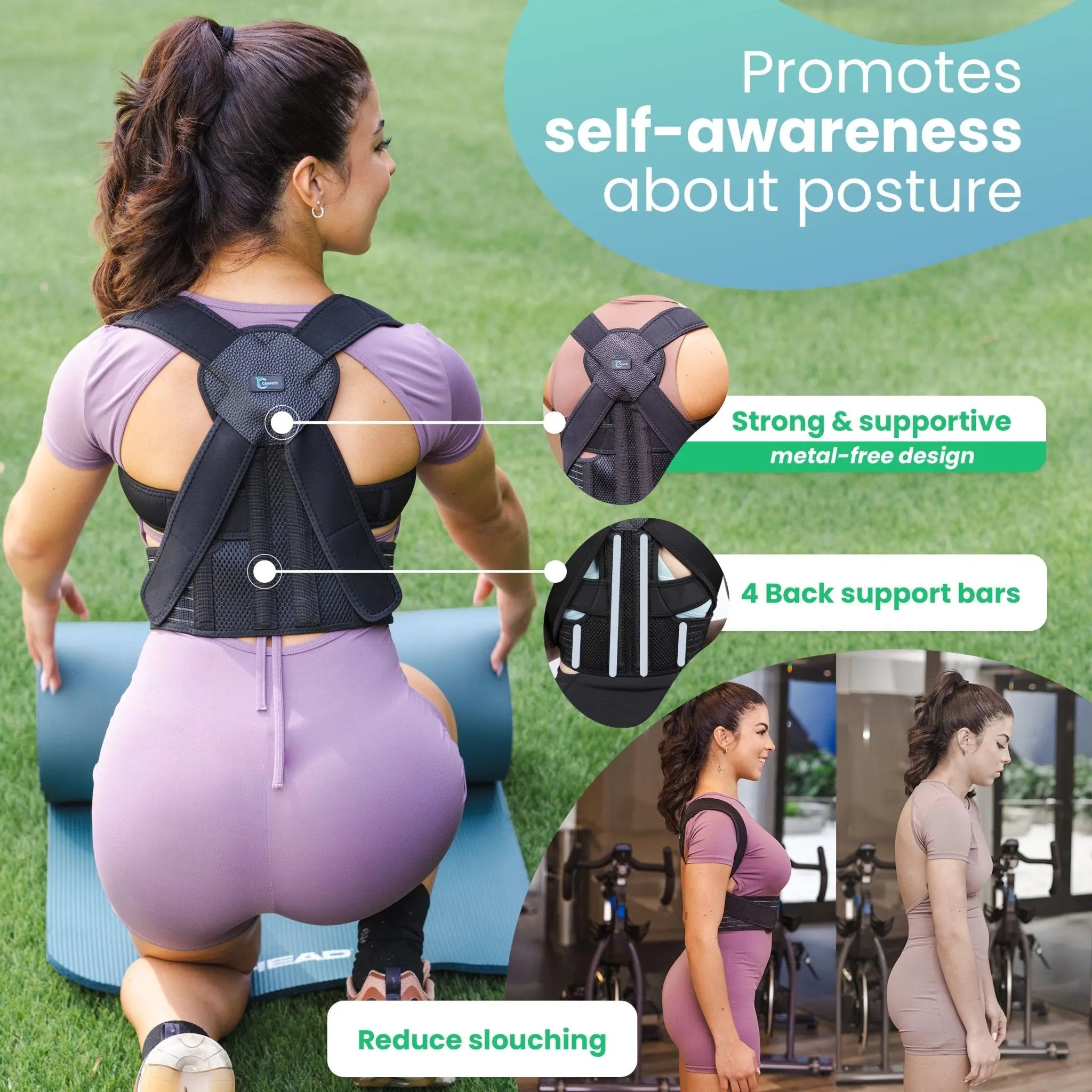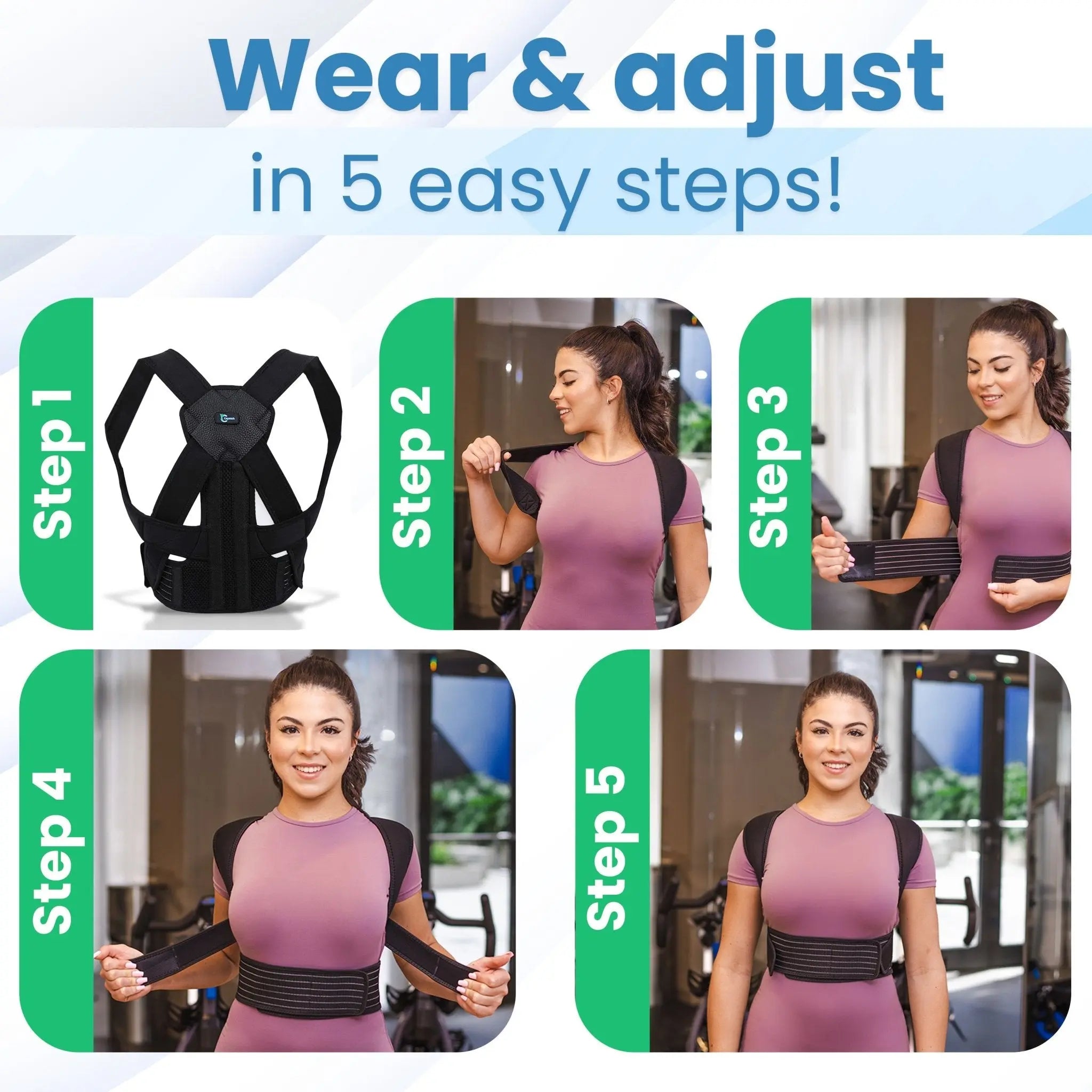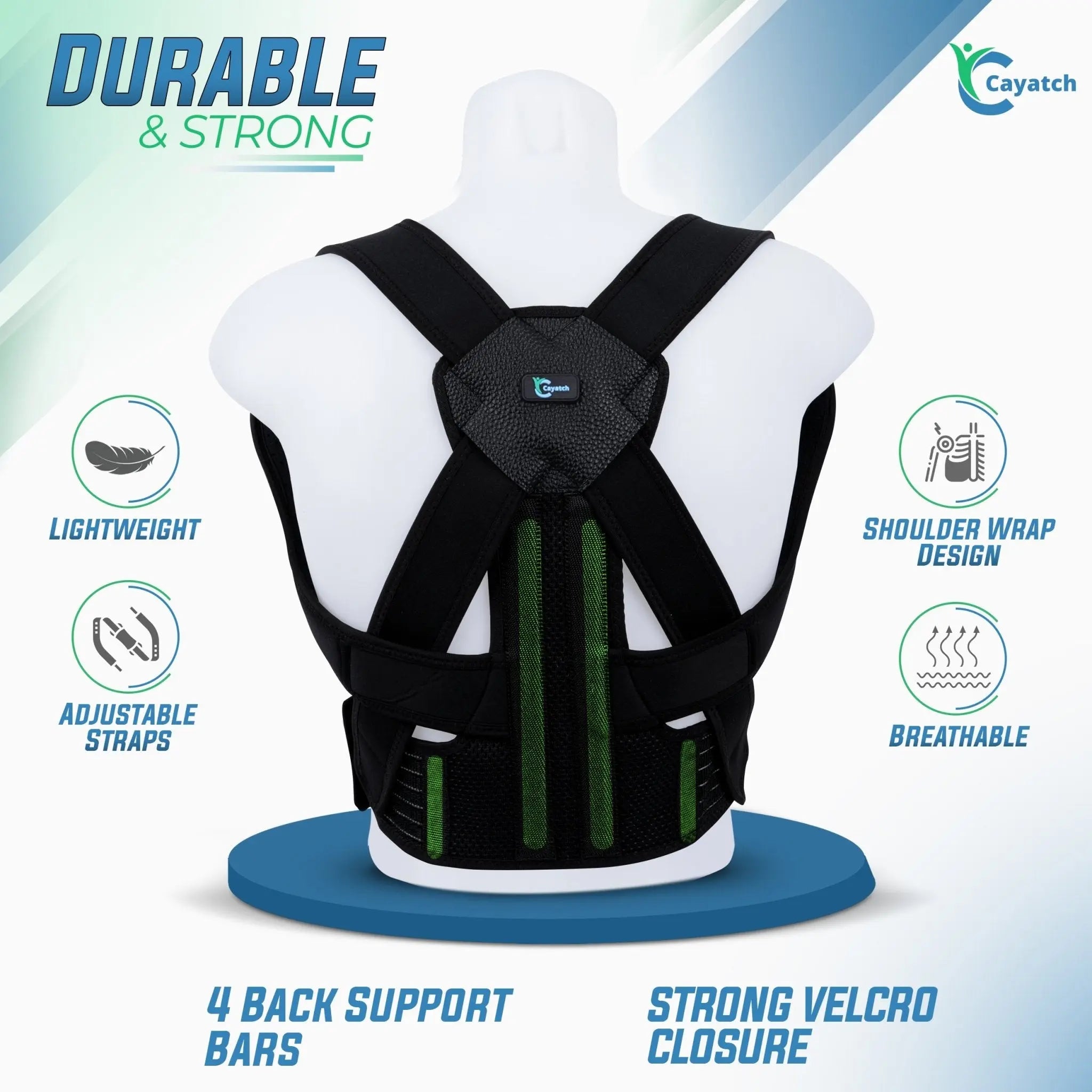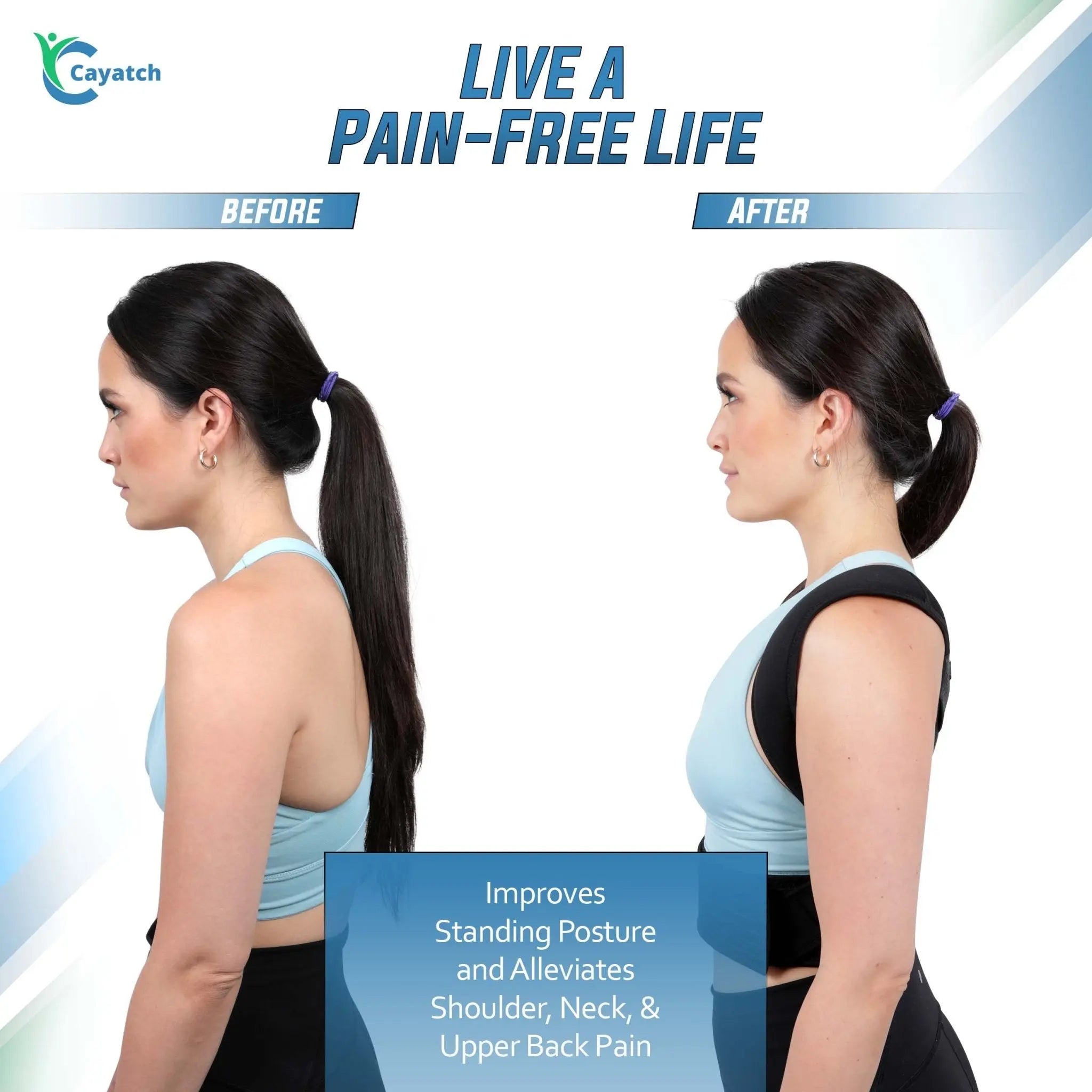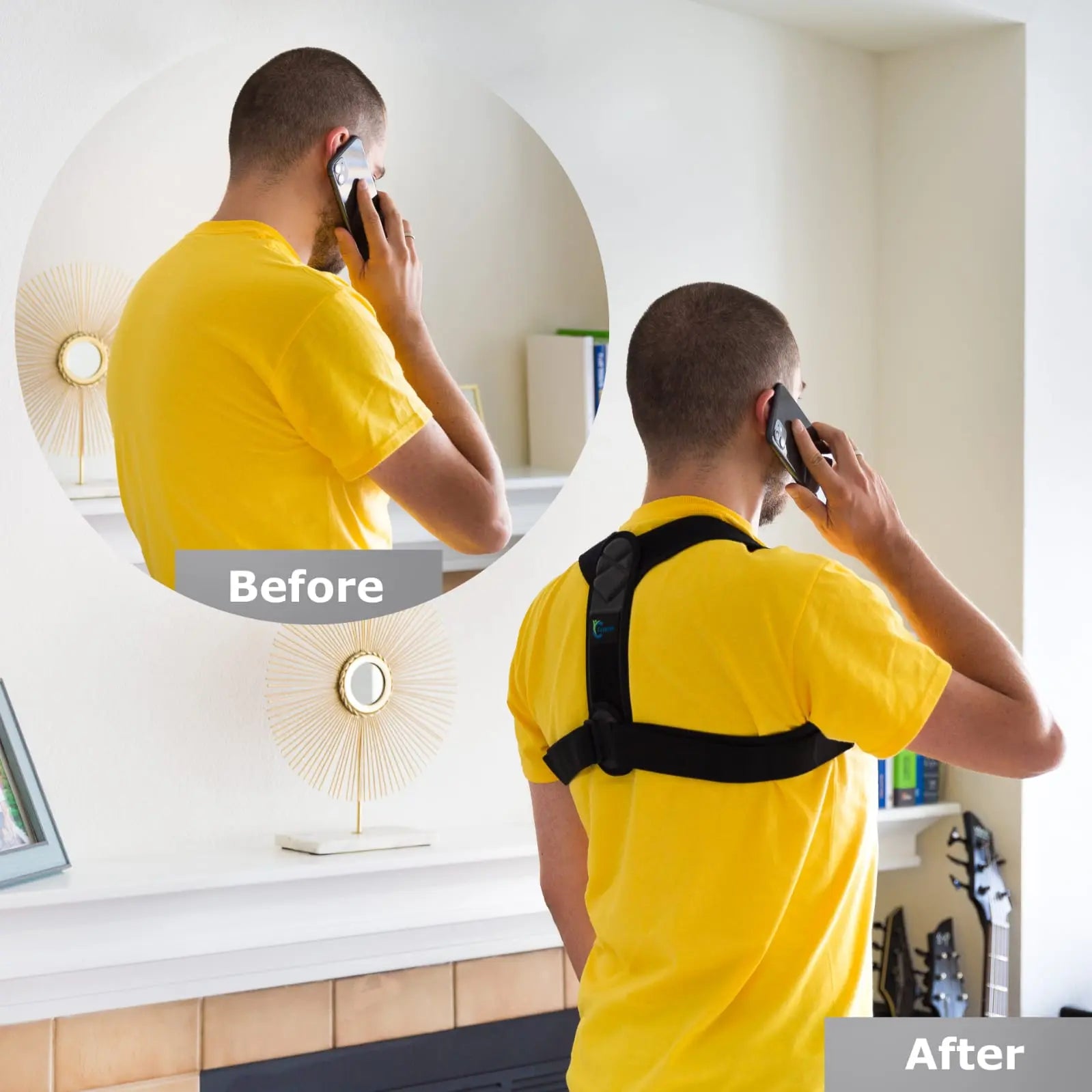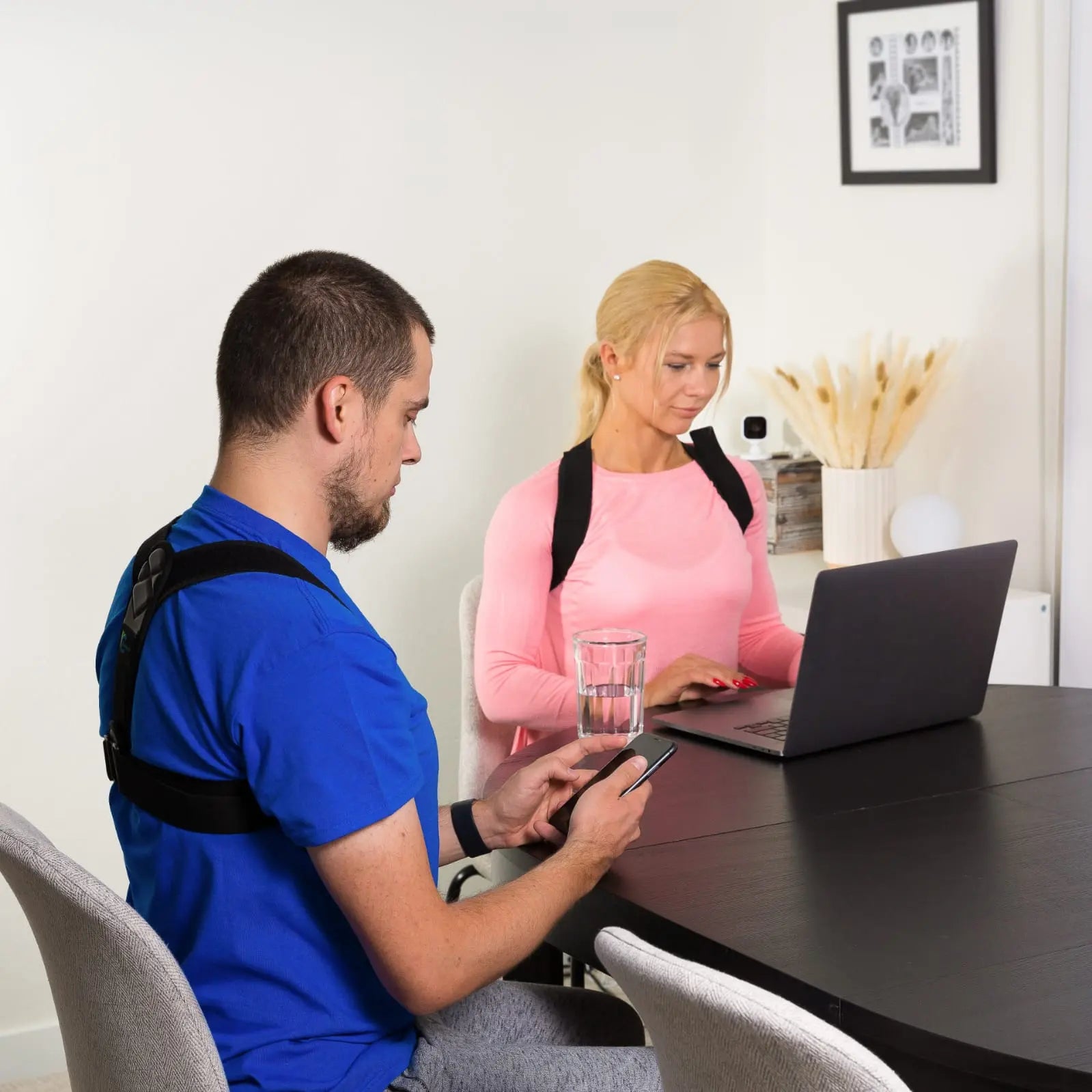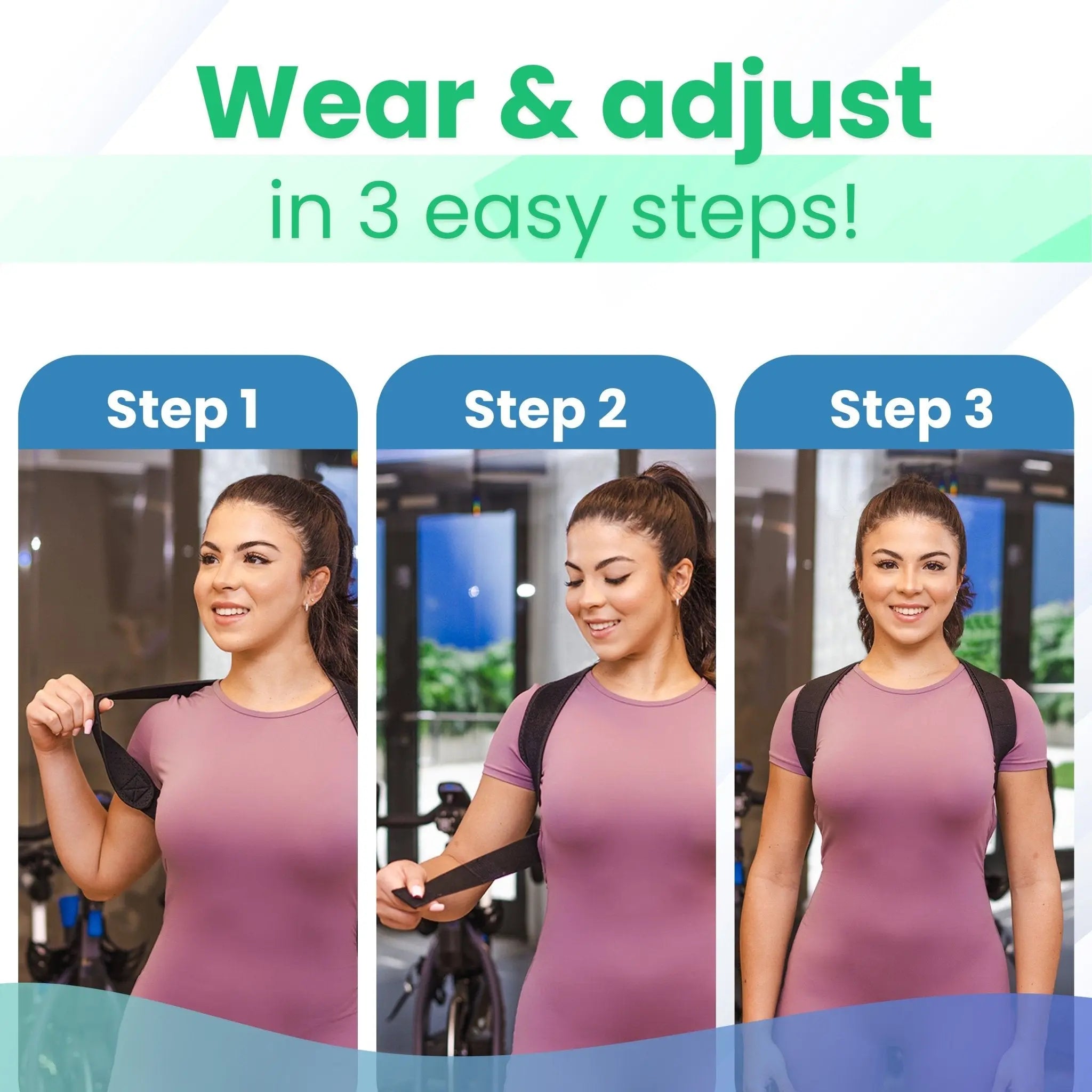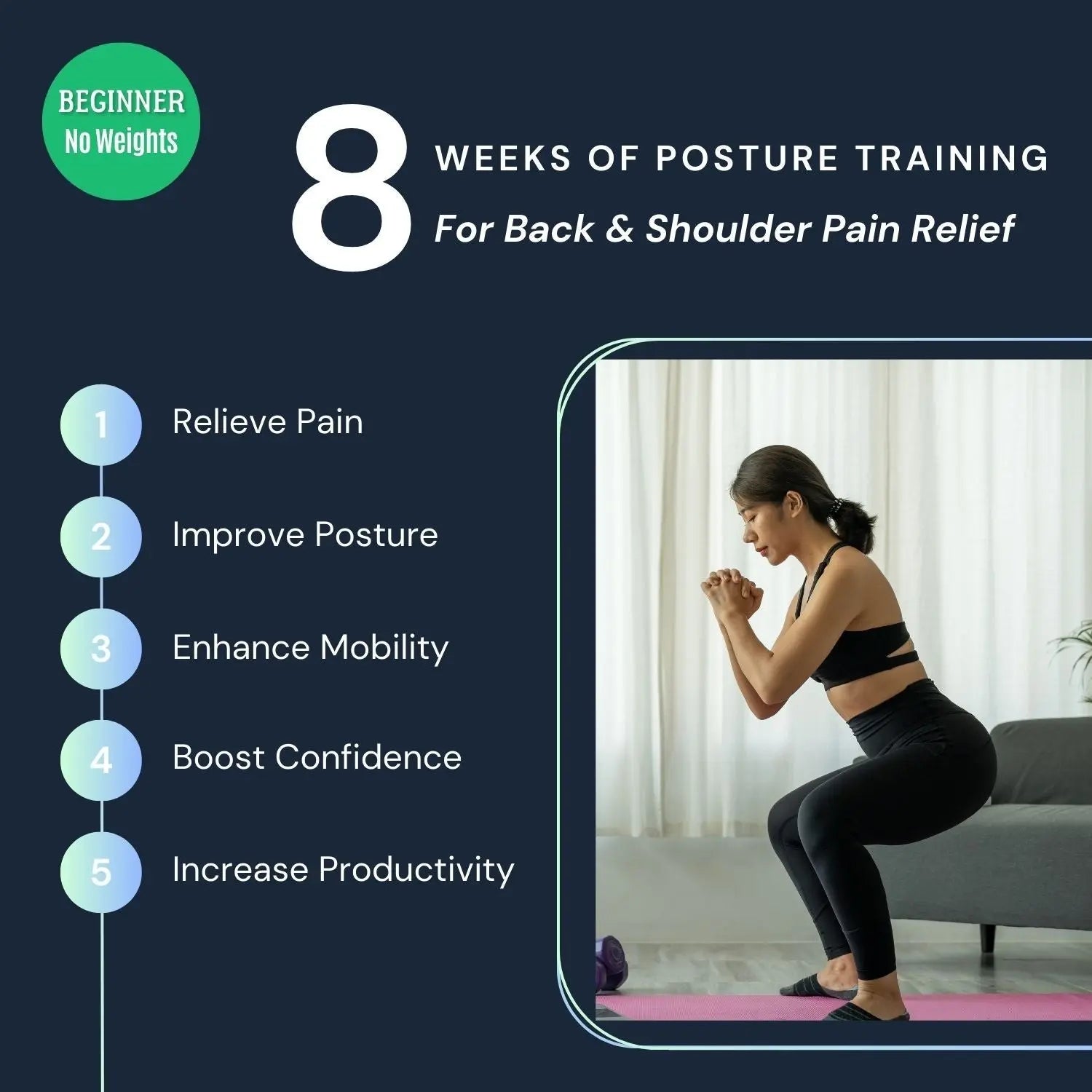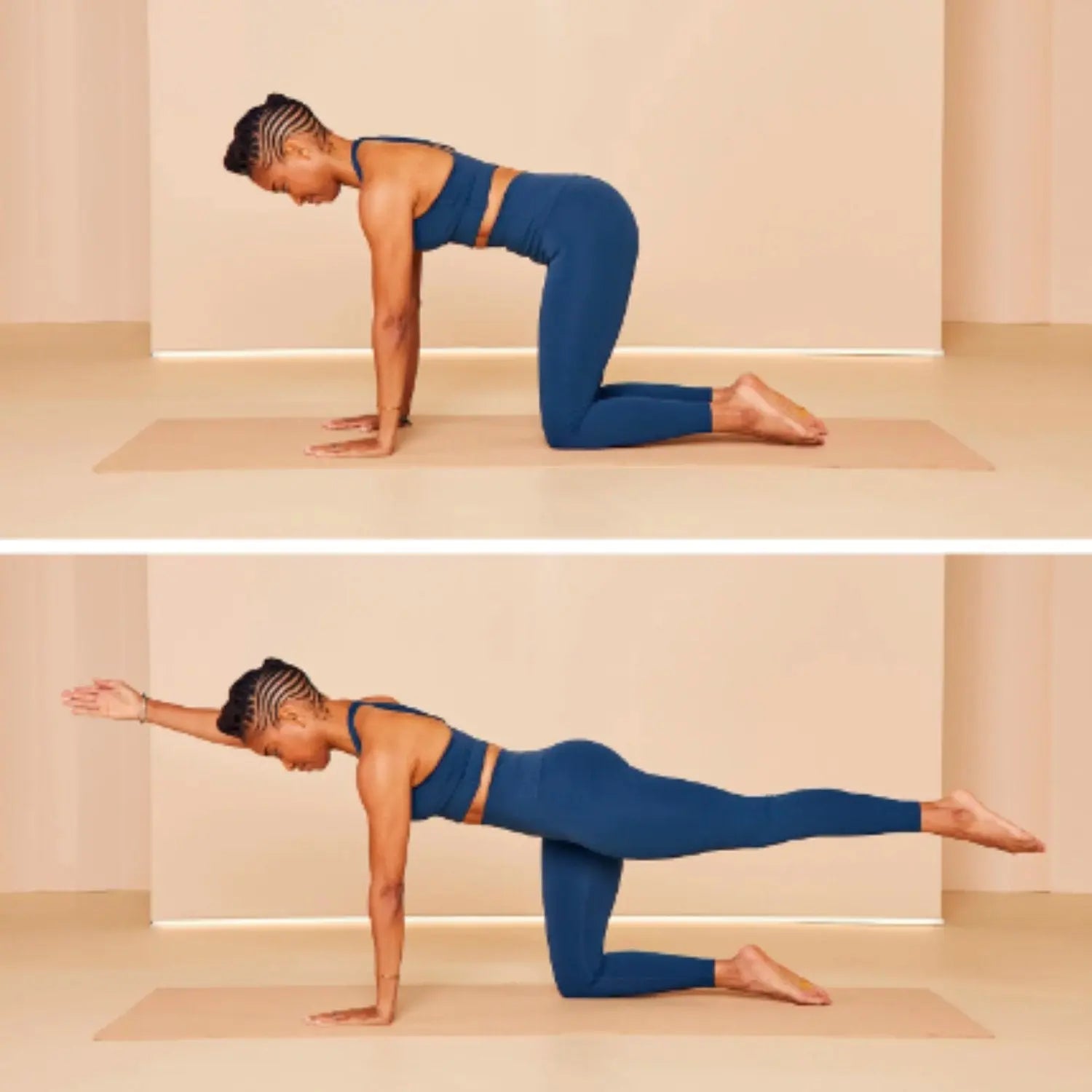How To Improve Posture | A Definitive Guide To A Fit Lifestyle

Maintaining good posture is essential because it helps keep your overall health from being compromised. If you've suffered from poor posture for an extended period, you might feel like it's too late to make a change.
However, it's never too late, and it's important to understand the consequences of not doing so. Poor posture can lead to health problems such as chronic neck and back pain, headaches, and fatigue.
So, how can you improve your posture? You can start by correcting your sitting posture, being mindful of your daily posture, and incorporating routine exercises to correct it.
Once you become more aware of your posture, it becomes easier to reduce the risk of associated health problems resulting from poor posture.
Today, our focus is on making you aware of your posture and guiding you on the path to improving it.
What Causes Bad Posture?

Several factors can contribute to poor posture, from sitting in an abnormal position for extended periods to having weak muscles. Let's examine some of the key reasons behind bad posture:
1. Prolonged Sitting
If you have a desk job that requires long hours of sitting, your muscles can become fatigued and strained.
Fatigue prompts your body to seek rest, leading to poor posture.
2. Poor Ergonomics
Chairs lacking proper lumbar support can contribute to poor posture.
When your chair doesn't provide adequate back support or when its height doesn't match your desk's height, you're more likely to slouch.
3. Weak Muscles
Maintaining proper posture is challenging when your core muscles are weak. Insufficient strength in the abdominal, back, and neck muscles can result in poor posture.
Incorporating stretching and core-strengthening exercises into your daily routine can help.
4. Stress and Tension
Stress and anxiety can cause muscle stiffness, negatively impacting your posture.
You may notice muscle tightness in your neck and shoulders, leading to hunching and forward head positioning.
5. Lack of Physical Activity
A sedentary lifestyle can weaken muscles and contribute to poor posture. Regular exercise is crucial for preserving muscle strength and mobility, which are essential for supporting your spine and maintaining good posture.
Muscle atrophy makes it harder to keep the spine supported and to keep good posture.
6. Improper Footwear

Both high heels and shoes that lack proper arch support can harm your posture. Inadequate arch support can lead to uneven weight distribution, affecting spinal alignment.
High heels can push your torso forward, straining the lower back. Choosing appropriate footwear is crucial for maintaining good posture.
7. Age
As we age, a loss of muscle strength and flexibility can lead to slouching and other posture-related issues. Muscle loss and reduced joint flexibility can make it challenging to maintain a youthful posture, resulting in a stooped or bent stance.
8. Genetics
While genetics can influence natural postural tendencies, they typically play a smaller role than factors like diet and exercise.
Although genetics may contribute to some posture-related disorders like scoliosis, environmental and behavioral factors are often more significant.
9. Medical Conditions
Slouching or hunching over due to an improperly positioned desk can strain muscles over time. This happens when your desk is not in the right alignment with your sitting position. Continuously hunching over to work leads to poor posture over time.
Conditions such as scoliosis, kyphosis, and injuries (e.g., fractures or muscle imbalances) can impact posture.
Various diseases can affect the physical shape and position of the spine, leading to postural issues and pain.
How to Permanently Improve Your Posture

If you want to make lasting improvements to your posture, you need to focus on specific areas. We will now discuss key areas to pay attention to in order to achieve lasting fixes.
1. Posture Assessment
Start by assessing your current posture. Stand in front of a mirror and take note of any problem areas, such as slouched shoulders, a jutting chin, or a rounded lower back.
Understanding your posture's challenges is the first step toward correcting them.
According to physical therapist and author Aaron Horschig, DPT, the author of "The Squat Bible," regularly checking your posture is crucial for preventing injuries and performing at your best.
2. Strengthening Core Muscles
Strong abdominal, back, and neck muscles are essential for maintaining an upright posture. Incorporate exercises like planks, bridges, and rows into your routine to target and strengthen these muscle groups.
Building these muscles will give you an advantage in achieving better overall posture by helping you maintain perfect alignment.
3. Stretching and Flexibility Exercises
Include daily stretches to loosen tight muscles, enhancing your flexibility. This will make it easier to sit up straight with the correct alignment.
Stretching can target specific muscle groups that influence your posture, including your chest, abdomen, and back.
By addressing the core muscles responsible for poor posture, stretching can help you achieve proper alignment more effectively.
4. Proper Alignment Techniques
Study and apply principles of correct alignment to your daily routine. When standing, aim for a straight line from your ears to your hips to your ankles.
When sitting, keep your feet flat on the floor and your spine in a neutral position. Maintain the correct sitting and standing posture regardless of your activities.
5. Ergonomic Changes
Rearrange your office and furniture to support better posture. Adjust the height of your chair and desk to maintain a healthy posture throughout the day.
Dr. Rempel, an expert in ergonomics and workplace medicine, has conducted extensive research on ergonomic adjustments to prevent workplace injuries. He emphasizes the effectiveness of ergonomic changes in improving posture.
Reduce physical stress by using ergonomic chairs, keyboard/mouse arrangements, laptop stands, or other adjustments that support proper posture.
6. Mindful Posture Awareness
Develop heightened awareness of your posture throughout the day, whether sitting, standing, or walking.
Make it a habit to regularly check your body to ensure it maintains a straight alignment. Stand with your upper body straight, maintaining neck and back alignment.
Pull your stomach in, keep your feet flat on the floor, relax your shoulders, and let your hands hang freely at your sides.
Avoid leaning to one side, as it can cause weight imbalance.
Ensure even distribution of your total body weight to prevent slouching, which concentrates weight in specific areas.
7. Posture-Correcting Devices
Consider using wearable technology and other devices as gentle reminders to maintain proper posture.
These devices can aid your efforts to correct your posture. For example, you can use the Cayatch posture corrector to help you prevent slouching.
Additionally, wearing a posture corrector helps build muscle memory and trigger awareness of any slouching automatically.

8. Seeking Professional Help
If your poor posture is negatively affecting your health or has become a serious issue, consult a doctor. Experts in orthopedics, such as physical therapists, chiropractors, and orthopedic surgeons, can provide personalized care plans.
9. Lifestyle Adjustments
Make lifestyle modifications to encourage better posture. Pay attention to how you carry backpacks or bags, and try to avoid prolonged sitting.
Dr. Michael Greger, an author and physician who founded NutritionFacts.org, emphasizes the benefits of a plant-based diet as a means of promoting overall health.
Avoid prolonged standing in one position; take breaks and incorporate stretching into your routine.
Include core-strengthening exercises in your daily workout to target your core muscles and improve posture.
10. Patience and Consistency
Recognize that correcting your posture is a time-consuming process. Stay committed and patient with yourself, as maintaining good posture requires consistent effort over time.
How to Improve Your Posture at Home

Improving your posture at home involves addressing some often overlooked aspects. Let's explore adjustments that can help you enhance your posture in the comfort of your own home.
1. Create a Posture-Friendly Environment
Begin by making your home environment conducive to good posture. If you work or study from home, optimize your workstation. Ensure your chair provides adequate lumbar support and ergonomics.
To reduce neck and shoulder strain, position your desk and computer monitor at eye level. Maintain a tidy workspace to prevent tripping hazards and facilitate movement.
Invest in supportive chairs and mattresses to promote optimal posture in your living room. When sitting, keep your feet flat on the floor and your knees at a 90-degree angle.
You can use cushions or pillows for additional support. Proper lighting reduces eye strain and encourages upright sitting or standing.
2. Home Exercises and Stretches
Regular exercise and stretching at home are essential for improving posture. Exercises like planks, bridges, and leg lifts strengthen the muscles that stabilize your spine, preventing slouching. Make these exercises a part of your routine to progressively enhance core strength.
Additionally, incorporate stretches to counter the effects of prolonged sitting and promote balanced muscle function.
Consider practicing yoga or Pilates, as they improve posture, flexibility, and core strength. These disciplines incorporate exercises and stretches that focus on posture improvement.
Band or bodyweight resistance training can target specific muscle groups crucial for posture. Consistent workouts will contribute to better posture and overall health.
3. Self-Correction Techniques
Self-correction involves mindfulness and physical adjustments to maintain good posture throughout the day. Regularly assess your alignment to cultivate postural awareness.
Whether you're sitting at your computer, standing, or walking, periodically check your posture and make necessary adjustments.
By implementing self-correction strategies daily and paying attention to your posture, you can gradually retrain your body to align correctly. As these efforts become habitual, your posture and comfort will noticeably improve.
How to Improve Your Posture at Work

Maintaining good posture at work is crucial, particularly if you have a desk job that requires extended periods of sitting. However, you can definitely enhance your posture while at work.
Start by adjusting your chair to the appropriate height, allowing you to keep your feet flat on the ground while maintaining a straight back.
Ensure that your computer screen and desk are correctly aligned to promote comfortable posture.
Utilize a backrest to support the natural curve of your spine, aiding in maintaining a proper posture and reducing muscle strain.
Additionally, take frequent breaks to stand up, stretch, and move around. This practice effectively prevents stiffness and improves circulation.
Lastly, be mindful of your posture and make adjustments whenever you catch yourself slouching. Over time, this conscious effort will become a habit, and your body will automatically adapt to maintain better posture.
How to Improve Posture While Driving

Driving for extended periods without paying attention to your posture can be detrimental. Here are some tips to enhance your posture while driving:
- Ensure your seat is adjusted so that your hips are level with your knees and your feet can comfortably reach the pedals. Adjust the backrest to support the natural curve of your spine.
- If your car seat lacks adequate support, consider using a lumbar cushion to maintain your natural posture without slouching.
- Adjust your steering wheel to keep it easily within reach, and maintain slightly bent arms. Also, ensure you don't have to stretch too far to use the steering wheel.
- Utilize the headrest to provide proper back support while driving, adjusting it to match the level of your head.
- Avoid driving for excessively long periods without taking breaks. Take frequent breaks to reduce muscle fatigue and back pain.
How to Improve Posture While Sitting
 Improving your posture while sitting requires consistency and heightened awareness. Here are some tips to help you maintain better posture while sitting:
Improving your posture while sitting requires consistency and heightened awareness. Here are some tips to help you maintain better posture while sitting:
1. Sit with your feet flat on the ground
When using a chair and desk, ensure your feet are flat on the ground to evenly distribute pressure on your hips.
Avoid crossing your legs, even if it feels comfortable, and strive for balanced weight distribution with proper back support.
2. Invest in a supportive chair
A good chair with adequate lumbar support to significantly enhance your sitting posture.
Opt for an adjustable chair that allows you to customize the height and angle according to your needs. Ensure your chair and desk are properly aligned.
3. Sit up straight
Maintain an upright posture with a straight back and relaxed shoulders while sitting. Be mindful of your position, and over time, your brain will adapt to this posture.
This will lead to a natural inclination to improve your posture whenever you slouch forward or lean back.
4. Keep your computer monitor at eye level
If your computer is not at your eye level, you will be hunching over while working. This is the main reason why people who do office work tend to have poor posture.
To prevent hunching over while working, keeping your computer monitor at eye level is crucial to avoid straining your neck and shoulders.
5. Take frequent breaks
Take short breaks every 30 minutes to move your body. Incorporate stretching exercises during breaks and consider planks to engage your muscles and reduce tension.
6. Sitting on the floor or a stability ball
Experiment with sitting on the floor or using a stability ball, both of which can improve posture and overall health.
Sitting on the floor, especially cross-legged, strengthens hips and increases flexibility. To prevent overuse and pain, change leg positions frequently.
You can use cushions or yoga blocks under the hips and provide back support against a wall or pillow to reduce lower back discomfort. Remember to stand up and stretch to prevent stiffness if sitting on the floor for extended periods.
Sitting on a stability ball engages your core muscles to maintain balance, contributing to better posture. To ensure correct ergonomics, your feet should be flat on the floor with knees at a 90-degree angle, and the ball size should match your height.
How to Improve Posture for Women

Women often tend to carry bags and purses on one shoulder, which can lead to leaning to one side. Additionally, wearing high heels can result in postural changes and a shift in the body's natural alignment.
Exercises and Tips for Women
To counteract the effects of carrying bags or purses, focus on activities that strengthen the core, upper back, and neck muscles. Incorporate exercises like planks, rows, and neck stretches into your routine.
- If you must carry a bag, consider using a crossbody design to avoid straining your back and shoulders.
- While high heels may be a fashion choice, it's advisable not to wear them every day. Opt instead for flats or supportive footwear to promote better posture.
- If you frequently wear high heels, take the time to stretch and massage your feet and calves to alleviate tension.
How to Improve Posture for Men

Men who spend long hours sitting, especially in desk professions, can experience negative impacts on their posture. Sedentary lifestyles often lead to hunched shoulders and a rounded back.
Exercises and Tips for Men
- To strengthen the muscles in the upper back and neck and counteract poor posture, include exercises like chin tucks, seated rows, and cervical spine stretches in your routine.
- An ergonomic workstation should consist of a chair with lumbar support and a monitor that can be adjusted to keep the screen at eye level as you work.
- Take short breaks every 30 minutes to an hour to get up from your chair and move around. This practice helps prevent the development of incorrect sitting habits.
Frequently Asked Questions (FAQs)
Can you correct years of bad posture?
You can correct your posture whenever you want. Even if you have been unaware of this for years, you can take the steps right away.
Remain consistent with the posture-correcting methods, and you will see improvements in no time.
How long does it take to correct posture?
If you make a habit of good posture, it may take 2-4 weeks to see noticeable changes in your posture. Consistency is the key to seeing rapid change in this case.
Is 21 too late to fix posture?
Your age doesn’t matter when you want to change your posture. You can attempt to improve it anytime you want. So, 21 is not too late to fix your posture.
Does gym improve posture?
Yes, if you do exercises that target your specific muscles, you can improve your posture through the gym.
Choose exercises that help to strengthen your core muscles and improve your overall body balance.
Wrapping Up
Maintaining proper posture is crucial for both physical and mental well-being. It enhances self-confidence, respiratory capacity, and cardiovascular health while reducing the risk of musculoskeletal problems.
Correct alignment supports the body's natural processes and prevents discomfort and pain, contributing to a healthy and pain-free life.
For more information and specialized advice on improving posture, consider consulting healthcare specialists, physical therapists, or fitness experts.


























